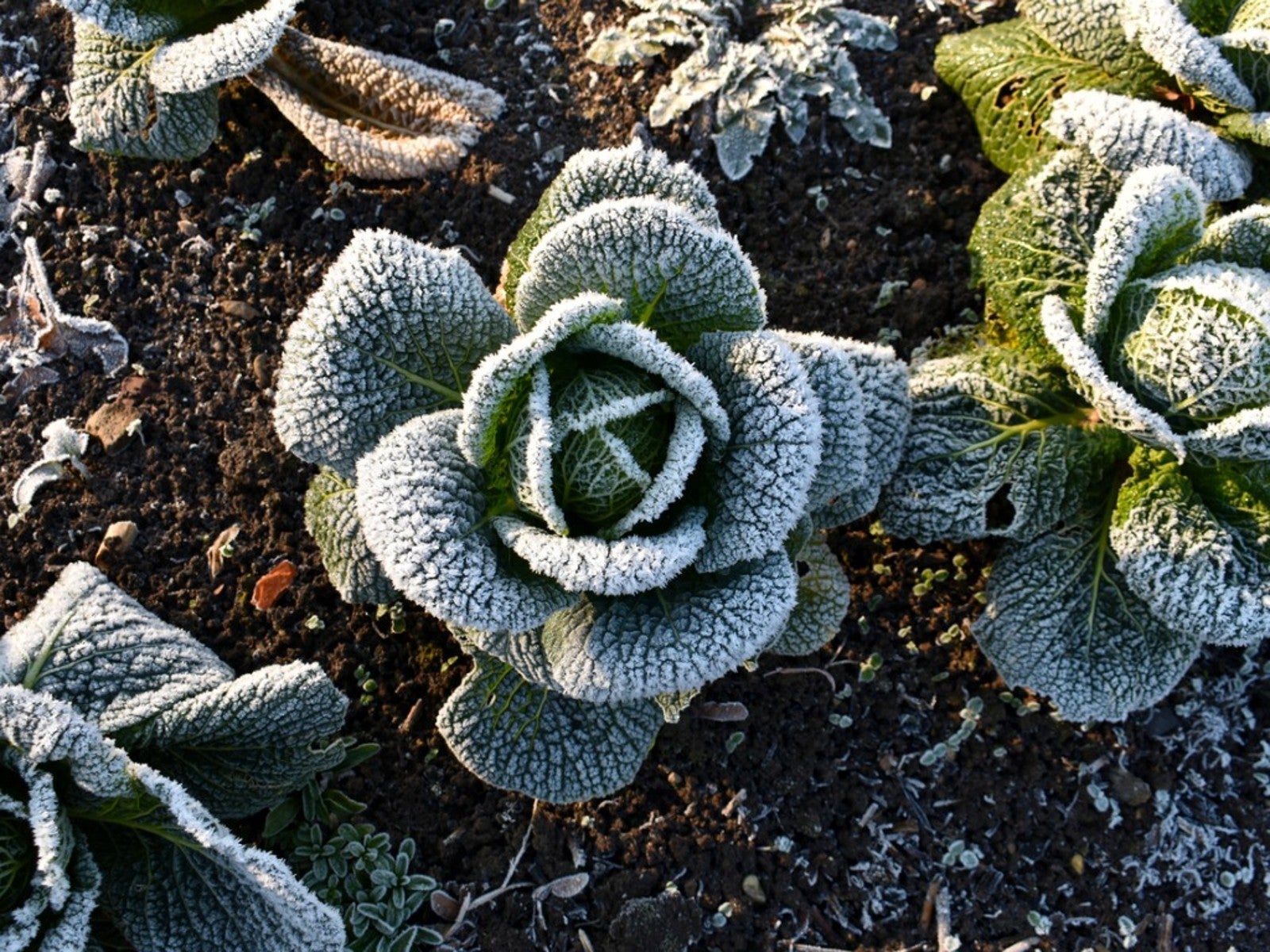Cool Weather Crops: How Freezing Temperatures Affect Cold Hardy Plants


Are there garden vegetables that can survive frost? The answer is yes. Many root vegetables and some members of the cabbage family can withstand a light frost, while certain types of leafy greens, potatoes and peas will tolerate a heavier frost. But how do freezing temperatures affect these cold-weather vegetables?
Freezing Temperatures and Cool-Weather Crops
Although gardeners often use the terms “frost” and “freeze” interchangeably, there is a difference. Frost occurs when moisture in the air creates ice crystals on the surface of the plant. A freeze happens when ice forms in and around the cells of the plant.
Freeze damage occurs when the water inside the plant expands as it turns to ice. This causes the plant's cells to burst, resulting in irreversible damage to plant tissues. In general, frost-tolerant vegetables have more intercellular space and can withstand internal ice formation better than frost-tender plants.
Freeze Damage in Cold-Weather Vegetables
When frost forms on the surface of cold-tolerant vegetables, moisture is pulled from the intercelluar spaces. This essentially dehydrates the cells and young plants are the most susceptible to damage. Depending upon the crop, this can cause yellowing of the foliage or lifting of the epidermis layer of the leaf.
On the other hand, freeze damage in cool-weather crops often creates a water-soaked appearance on foliage and fruit. The foliage of leafy crops can become limp. Members of the cabbage family may turn brown and emit a strong odor. Large fruiting bodies can decay and collapse. Since freeze damage is irreversible, crops loss is inevitable.
Protecting Vegetables from Frost and Freeze
Late spring and early fall frosts and freezes are the most concerning to gardeners. In the spring, young plants are the most susceptible to cold temperatures and plant loss can occur even with frost-tolerant vegetables. In the fall, an early freeze can end the growing season prematurely. Gardeners can protect their crops using these methods:
- Mulching – A limited amount of protection can be obtained by mulching cold-hardy vegetables. Mulching helps retain ground moisture and heat, but provides little protection from dropping ambient temperatures.
- Covering - One of the quickest methods for protecting vegetables from frost is by covering the plants with fabric row covers, old bed sheets, blankets, baskets or cardboard boxes. Covering plants prior to nightfall traps in heat and can provide between 2 to 6 degrees F. or 1 to 3 degrees C. of protection.
- Tunnels – Plant tissue in direct contact with row covers can be susceptible to freeze damage. Since low and high tunnels create an area of trapped air around the plants, these methods of protecting cold-weather vegetables are often more effective during a freeze. Due to their transparency, tunnels can be left in place much longer than row covers.
Gardeners are advised to monitor the forecast in order to protect cool-weather crops from frost and freeze damage. Bear in mind, the forecast predicts surface air temperatures, which is measured several feet above the ground. Frosts and freezes occur when ground level temperatures reach 32 degrees F. (0 C.) or colder.
Gardening tips, videos, info and more delivered right to your inbox!
Sign up for the Gardening Know How newsletter today and receive a free copy of our e-book "How to Grow Delicious Tomatoes".

Laura Miller has been gardening all her life. Holding a degree in Biology, Nutrition, and Agriculture, Laura's area of expertise is vegetables, herbs, and all things edible. She lives in Ohio.
-
 Which Invasive Shrubs Should You Avoid Growing? Plus, Best Natives To Plant Instead
Which Invasive Shrubs Should You Avoid Growing? Plus, Best Natives To Plant InsteadCertain plants may look lovely but they can wreak havoc to local areas and native wildlife. Here are the key invasive shrubs to avoid – with recommendations on gorgeous native alternatives to try
-
 What Not To Plant With Tomatoes: 8 Bad Neighbors That Could Ruin Your Harvest
What Not To Plant With Tomatoes: 8 Bad Neighbors That Could Ruin Your HarvestNot all companion plants are beneficial – some can sabotage your tomatoes. Find out which ones to keep at a safe distance in the garden.